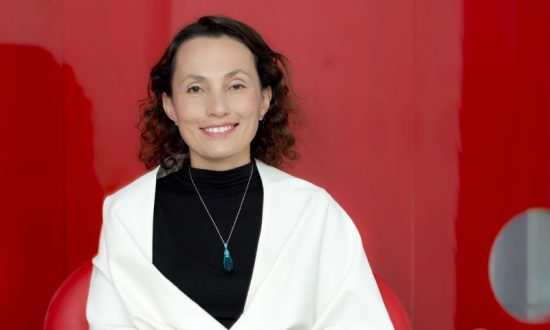Martha Cecilia Gómez is the Co-founder of Education SOUL. Manager of digital transformation projects in education. Business consultant in design, structuring and technical execution of educational projects with special emphasis on the development of STEAM skills, entrepreneurship and female empowerment. Expert in facilitation with creative methodologies such as design thinking and lean startup. Instructional Designer (Certified by the IDB). Expert in developing edtech projects based on adaptive learning with the use of artificial intelligence and machine learning for vulnerable populations. Economist and MBA from the National University of Colombia, Master in Innovation Management from the Autonomous University of Barcelona.
During the last 6 years Education Soul, a Colombian company dedicated to the development of tailored educational projects, has faced the challenge of creating pedagogical tools that are capable of awakening the spirit of 21st century skills within the communities in conditions of vulnerability it targets. This has presented the challenge of designing very motivating and dynamic content to be used in contexts where connectivity is scarce or non-existent, without losing its ability to promote effective learning and, in turn, has generated some reflections on the characteristics that it should contain, which we address in this article in order that they may become references for other organizations and individuals interested in the subject.
For Education Soul, each of the educational projects it joins is approached as a challenge in itself, not only because of the need to create easily accessible formats, but also because each of its tools must be carefully created keeping in mind the needs of diverse, changing and challenging users such as children, young people and teachers who seek to develop learning in this digital age, in areas such as computational thinking, STEAM, entrepreneurship and in general in the so-called 21st century skills.
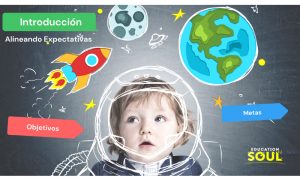
As a result of this accumulated experience, strengthened during the pandemic, Education Soul has generated a series of learnings in terms of the development of educational content, which we would like to share briefly below and even though for many they are almost obvious, we note with concern that the strong demand for virtualization, typical of the emergency that we have experienced in the last two years, shows that there is still a long way to go in this area, especially in Latin America.
A dozen reflections:
- The pedagogical materials and tools must demonstrate the collaborative nature in the construction of knowledge. The contents must not only be graphically beautiful and show quality in their design, but they must also reflect the result of a process of collective construction according to a contextualized situation of the population they are going to reach, involving agents, even outside the conventional academic community.
Intensify the aspects related to the expected learning and propose to the student a deep inquiry based on their culture and empathy with the communities that surround them.
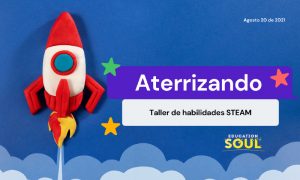
Although areas of knowledge tend to be universal, it is very valid that the pedagogical materials bear the touch of the communities where they will be used, since they generate a sense of cultural adaptation that creates empathy among the beneficiaries of said tool. For example, workshops conceived by Education Soul, such as Smartphone filmmaking, which has been applied in different local and regional contexts such as Colombia (2020-2021) and Chile (2021), despite following the same guideline, has been applied with differentiated tools and language depending on the location and the results of each cut show this: while satisfactory in both cases, they are far from similar to each other, due to the cultural adoption of each context. The scripts, the use of language, the cultural meaning, and the techniques contain significant evidence.
- The following serve to empower teachers: Pedagogical materials, especially in k12 areas, must be very solid when it comes to addressing the role of the teacher and the transformation of their mentality to adopt active pedagogies. These materials can serve as transformation tools to the extent that they provide elements that favor the attitudinal change of teachers and help them recognize a new methodological route for addressing the issues that surround them.
Our experience with non-profit organizations shows us that, by having tools and materials based on active methodologies, teachers feel better supported to demonstrate their ability to align themselves with the educational dynamics of the 21st century. That is, teachers trained in active methodologies lose the fear of applying them when they feel supported by materials consistent with that purpose; and teachers without sufficient training in them are supported to begin their experimentation.
- The materials are more effective to the extent that they give space to prior appropriation by the teacher and to the fact that he/she himself imprints his/her differentiating stamp. The contents and tools must contain a step by step guide for the teacher that accounts for the design philosophy, the objective that is expected to be developed, but also allows the teacher to make use of his/her creativity when applying them.
In our particular experience, the moments of greatest enjoyment on the part of the teacher have been perceived, in 2019 by the hand of a local organization, during a series of collective content creation days in STEAM areas, carrying out exercises to solve musical programming challenges and its combination with robotics. There, completely analogous teachers managed to break their prejudices against technology and themselves created new ways to bring it to their students.
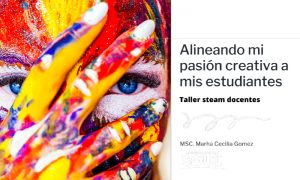
- Of course, a content design that places the student at the center of the process is key. When an experience revolves around this category, its implementation through content and teaching tools has a direct impact on students and how they interact with their peers.
Designs made in recent years have been very successful thanks to the balance of the simplicity of the tools in contrast to the robust structure that gives them life. A case in point is the STEM workshops designed in 2021 by Education Soul for the Breteau Foundation, which, thanks to their great acceptance, have been published in Spanish and English in the Foundation’s countries of influence, and have managed to easily bring children to the circular economy and propose solutions from their own homes to global problems such as pollution.
- Good instructional design makes a difference. Learning based on challenges, problems, self-inquiry, the maker phenomenon, etc., effectively leads the student to develop their thinking skills, but none of this is effective in its application without a correct conceptualization of the route. Learning. Each question, each challenge must be very well structured and follow a clear line drawn by the expected learning objective.
- As far as possible, seek creatively to involve more complex technological resources in the development of the learning process, in order to encourage students to promote the correct exercise of their digital citizenship. In cases where the adoption of edtech platforms is possible, it really favors and democratizes learning. in the development of the learning process, in order to encourage students to promote the correct exercise of their digital citizenship. In cases where the adoption of edtech platforms is possible, it really favors and democratizes learning.
The adoption of edtech platforms in the last 6 years in public educational institutions through the organization Fé y Alegría of Colombia, shows us that edtech platforms are not only ways to improve specific skills, but also create a digital culture in institutions, which is becoming stronger little by little, becoming a part of everyday life.
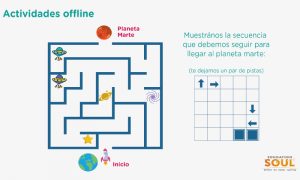
- Constantly materialize during the development of the learning construction route, the disciplinary balance required to optimize the appearance of solutions to the challenges posed. Lean on the principles of the STEAM approach (contextualization, creative design and emotional touch) and take them to projects in other areas.
- The contents and tools must reinforce the idea that learning is a constant construction. Include connections to real situations where error and failure are bridges to achieve satisfactory learning.
Tailor-made projects for social organizations aimed at closing gender gaps have shown us that we learn better when we connect with the content and when we feel identified by the problematic situations described in the materials that are presented to us.
- Establish, within the methodological design route, realistic expectations about the expected learning objectives and how to demonstrate them within the framework of understanding the context where they are applied.
- The materials must be inclusive and promote the closing of gender gaps. The content and tools designed should favor teamwork and, above all, multi-diversity in their composition, where students consider factors associated with gender, ethnicity, abilities and skills, age, and, why not?, the inclusion of teachers and parents as part of the team.
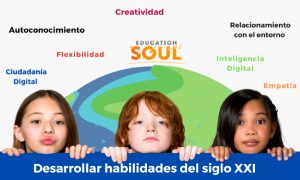
- Virtualizing content must be a professional effort carried out as a team that overcomes the temptation to fill learners with pdf materials without any setting. Support tools must be differentiated according to the medium through which they will be disseminated. We cannot expect for the same material, the same design to be used in face-to-face and virtual environments indiscriminately without appropriate adaptation.
- The designs must be made in a clear language, considering new ways of communicating the process and the objective. They should favor the development of life skills such as creativity, critical thinking, computational thinking and aspects such as awareness of diversity, respect and personal enjoyment during the process. At this point, the importance of communicating the learning results is highlighted: they are what really give value to all the instructional and creative effort. Encourage participants to share their experiences and learning through all available mechanisms to create community in diverse environments.
We hope that these dozen reflections serve to motivate many other organizations that work every day to change the way we bring knowledge to our population. We are convinced that our efforts as private organizations greatly contribute to breaking down barriers and democratizing quality education for our children and youths.




